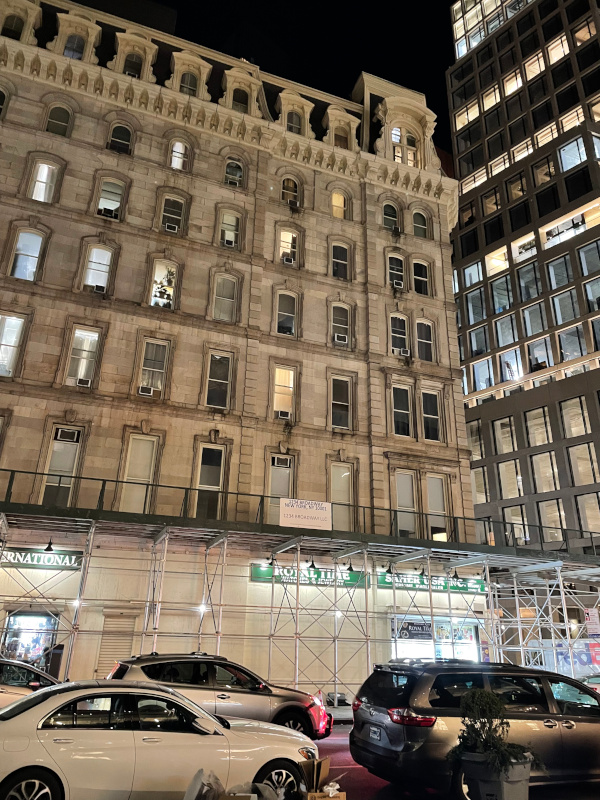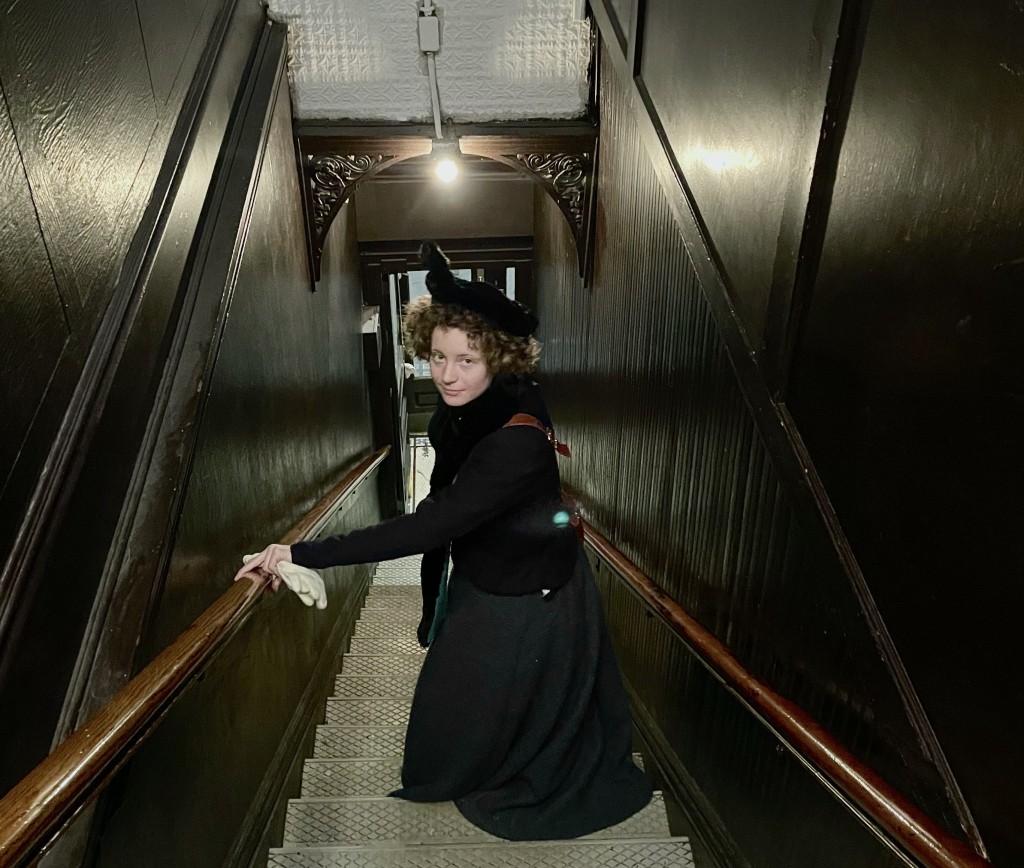Back at the beginning of February, when the Northeast experienced a serious cold blast, I went back to New York City for more historical trespassing and research. This trip was two weeks long, and during that time I visited many obscure historical buildings, and made some important discoveries along the way. Regular readers of this column will be familiar with my writings on becoming acquainted with Fred Hager’s descendants, well within this last trip I spent more time with them, and I uncovered untold treasures. [Read about her earlier trip to NYC in the April-July, and November 2022 Recording Pioneer columns]
To begin, the first two days I was there, the temperature didn’t get above freezing. It was truly the coldest I had ever been. Even with the mean cold, I walked many miles. Since my last trip, I had discovered a few other addresses that were related to the Zon-O-Phone label. If you look at any documents from the earliest days of the company, you will somewhere find the address of 872 Broadway. This location was their very first one. It was formerly the location of Berliner’s New York lab, but when Berliner moved out to Montreal, Frank Seaman set up his own lab there. All of the earliest Zon-O-Phone machines have this address on the metal decal. The magnificent building still stands today, and is truly a sight to behold. It is so untouched that I wrote nearly an entire previous article on its interior. This however was not the only location the company set up shop during its independence.
There were at least two other locations that we discovered while combing through city directories. One was up on the southern tip of the Bronx, and another quite close to many other recording labs on Broadway. After a day of walking, I decided to bundle up in my heaviest wool suit, fur cape, and fur lined bonnet to find this Broadway address. As any researcher could understand, the microfilm print that listed the city directories was difficult to read, so deciphering the exact address was frustrating. We concluded it was 1234 Broadway. This building was located a bit of a distance from the cluster of Tin Pan Alley, but it seems very likely to have been a lab at one time.

I waited for half an hour in 13 degrees Farenheit (-5 windchill) for an opening to get in the building. Once I got in, I began winding through a labyrinth of hallways, stairs, and doors. Many aspects of the building are original to its past, but others aren’t. One of the most notable fixtures were the several broad wooden stairwells. In select spaces, the original tiles floor tiles were untouched, and many doors were original. Much like the building that formerly housed the Columbia company (1155 Broadway) the structure takes up nearly the entire corner of the block. It is truly a maze of a building, I spent over an hour inside, looking for every old nook and cranny. There are many businesses within, and part of it is even a hotel. It seemed a few guests were slightly unnerved by my presence.
Maybe someday we will know where exactly in this maze of a building the Zon-O-Phone lab was. If you have studied these records, you may notice that there was a difference in sound quality and piano tone around 1902, and it is possible that a move to this location was part of these changes. The outside of the building is also quite exquisite, in a very ornamental 1860s-70s architectural style. I would highly recommend visiting this site for record collectors, as it is an impressive structure.
Another hidden gem within New York is the Old Town Bar. Many historians of the city may already be aware of this place for its gorgeous period interior and long history, but there is something that ought to catch the attention of record collectors. This bar is located on E. 18th street, which is the cross street to 872 Broadway. Yes, that’s right, the Old Town Bar is just a few steps away from the Berliner and later Zon-O-Phone lab. So you can bet that all those new fangled phonograph folks hung around that bar. Anyone who made Berliner records after 1897 likely patronized this bar. This also applies to the earliest Zon-O-phone records.
One curious thing to note is that on the wall toward the front of the place there is a piece of 1906 sheet music hanging on the wall that was published by Fred Hager, a possible frequent patron of the bar. With this in mind, I went to this bar several times throughout my trip. There isn’t enough space here for me to go on about the magnificent interior of the place, but one thing I will note for those who haven’t been there is the dumb waiter. It is fascinating to see an actual 1890s dumb waiter being used regularly. One of the nights I went to have dinner there I spent nearly my entire meal staring at it working, picturing the tired Hager’s band boys gabbing in German waiting for their sandwiches and beer to come down the ropes. This is another place you must go if you are a record collector visiting New York.

Perhaps one of the most important things I saw while in NYC wasn’t a building or wall, but a box. I met up with Fred Hager’s great nephew, Don, whom I have become friendly with. When we set up the meeting, it was not expected that he would bring along a piece of history. Since I first contacted him, he told me stories of a legendary steamer trunk that was once filled with sheet music, records, and ephemera that belonged to his great uncle Fred. It was an artifact he was aware of since Fred was still living. For a long time it was not known what became of the material inside the trunk. He and a few family members recently rediscovered the massive piece and brought it back to where it was originally stored, in Don’s (formerly Jimmy Hager’s) house. After it was brought back, he decided to bring a box full of what was left in it to me.
He did not tell me he was doing this until he was already driving out to Queens from mid Long Island. You could imagine my great surprise upon hearing this news in the middle of the sidewalk on my phone. It stopped me in my tracks. The anticipation was real. After hours of traffic, Don finally met up with us (it wasn’t just me, a few friends tagged along this journey), and in the back seat of his shiny new truck there was a simple box of treasures. It did not disappoint.
Filled to the brim were manuscripts, letters, newspapers, sheet music, and some mysterious miscellaneous papers. So this folks, is where I will leave you this month, as this discovery deserves its own piece. It was truly a sight to behold, even if the circumstances were somewhat comical and not quite the researcher’s ideal. Howard Carter’s quote upon seeing King Tutankhaman’s tomb seems most fitting for my reaction:
“I see wonderful things.”
R. S. Baker has appeared at several Ragtime festivals as a pianist and lecturer. Her particular interest lies in the brown wax cylinder era of the recording industry, and in the study of the earliest studio pianists, such as Fred Hylands, Frank P. Banta, and Frederick W. Hager.





















